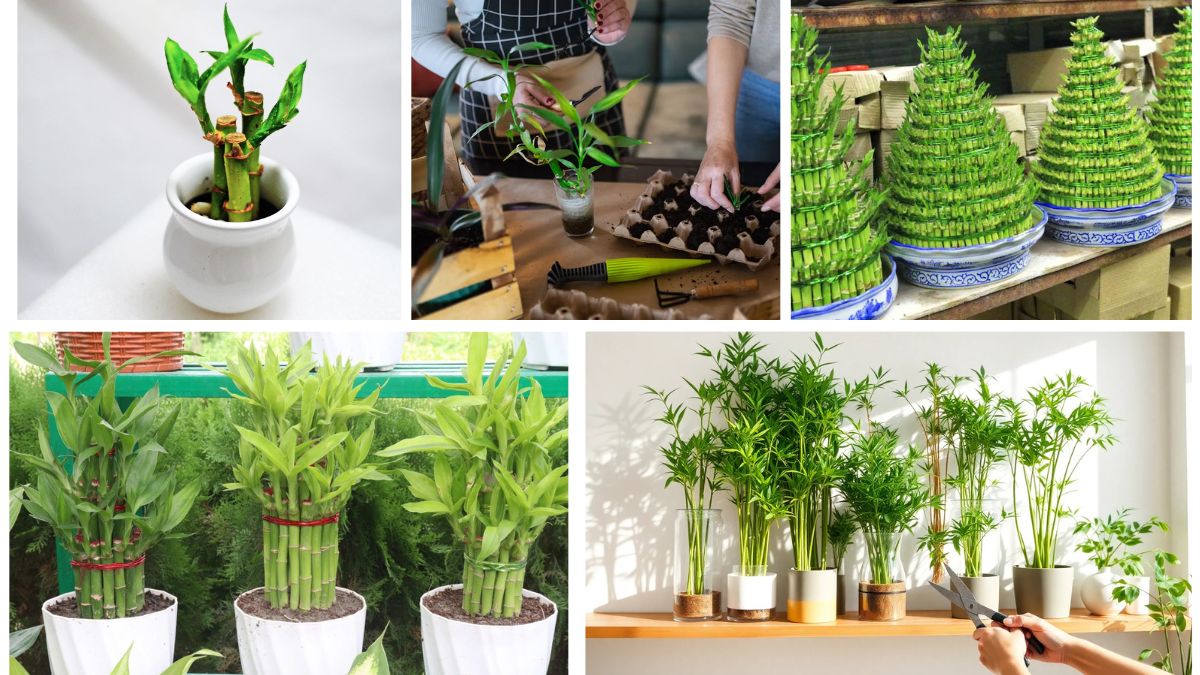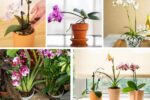Indoor bamboo plants have long been admired for their elegance, resilience, and symbolism of luck and prosperity. Whether it’s the widely popular lucky bamboo (Dracaena sanderiana) or true bamboo species that adapt well indoors, these plants add a touch of greenery and harmony to any space. For beginners, bamboo plants are an excellent choice because they are low-maintenance, tolerant of a variety of conditions, and versatile in design.
In this guide, we’ll cover everything you need to know about indoor bamboo plant care—from choosing the right type and planting method to proper watering, sunlight, pruning, and common issues to watch out for.
Why Grow Bamboo Indoors?
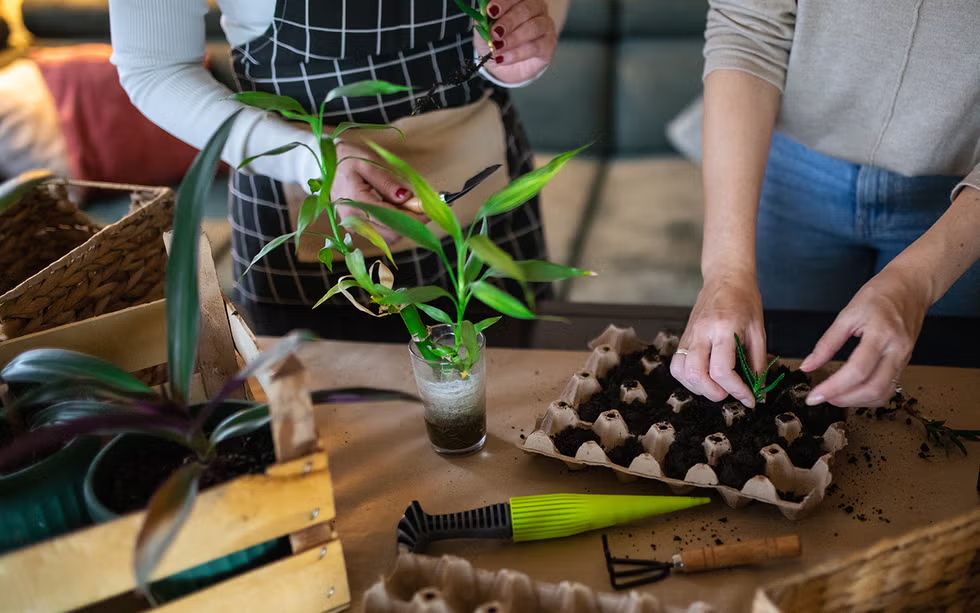
Bamboo plants are more than just decorative greenery. They offer several benefits that make them ideal for home or office spaces:
- Air purification – Bamboo helps filter toxins and improves indoor air quality.
- Aesthetic appeal – Their lush green leaves and elegant stems complement any décor style.
- Symbolism – Lucky bamboo is associated with good fortune, positive energy, and prosperity in Feng Shui.
- Low-maintenance – They thrive in minimal care, making them suitable for beginners.
- Compact growth – Unlike outdoor bamboo, indoor varieties remain manageable in size.
Choosing the Right Indoor Bamboo Plant
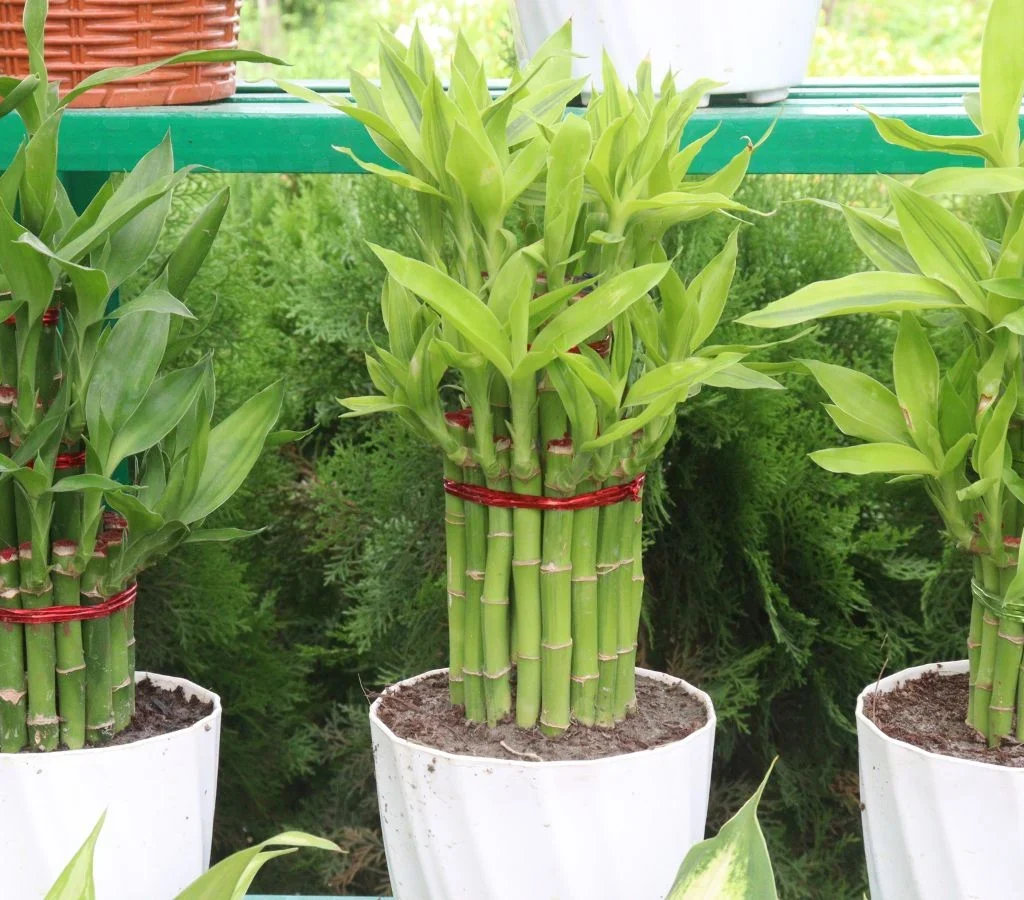
Not all bamboo varieties are suitable for indoor growth. Here are the most common options:
- Lucky Bamboo (Dracaena sanderiana)
- Not a true bamboo but a tropical plant.
- Grows well in water or soil.
- Extremely popular as an indoor decorative plant.
- Bambusa vulgaris (True Bamboo)
- Some dwarf bamboo species can adapt indoors.
- Requires more light and space compared to lucky bamboo.
- Heavenly Bamboo (Nandina domestica)
- Not a true bamboo, but has bamboo-like stems and is often grown indoors.
For beginners, lucky bamboo is the easiest and most common choice.
Planting Methods: Soil vs. Water
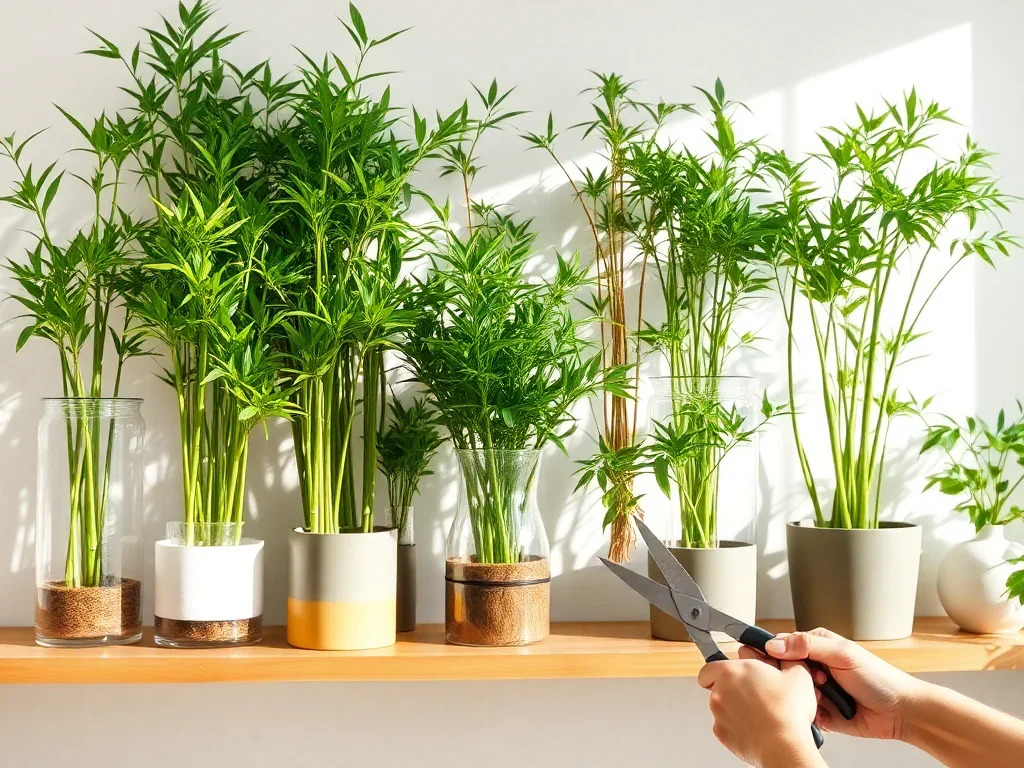
Indoor bamboo can be grown in two primary ways:
1. Growing in Water
- Place bamboo stalks in a glass vase or container.
- Add enough water to cover the roots (about 1–3 inches).
- Use distilled or filtered water, as tap water with chlorine or fluoride can harm the plant.
- Replace the water every 7–10 days to keep it fresh.
- Add small decorative pebbles or marbles to stabilize the stalks.
Pros: Low-maintenance, decorative look.
Cons: Limited nutrients; may need occasional liquid fertilizer.
2. Growing in Soil
- Use a well-draining potting mix (peat moss + perlite mix works best).
- Choose a pot with drainage holes to prevent root rot.
- Keep the soil evenly moist but not soggy.
- Fertilize occasionally to provide nutrients.
Pros: Stronger growth, long-term health.
Cons: Slightly more maintenance required than water-based growth.
Light Requirements
- Bamboo prefers bright, indirect light.
- Avoid direct harsh sunlight, which can scorch the leaves.
- Lucky bamboo can tolerate low light but grows best with moderate light.
- If placed in a dark corner, consider using a grow light to support healthy growth.
Watering Indoor Bamboo
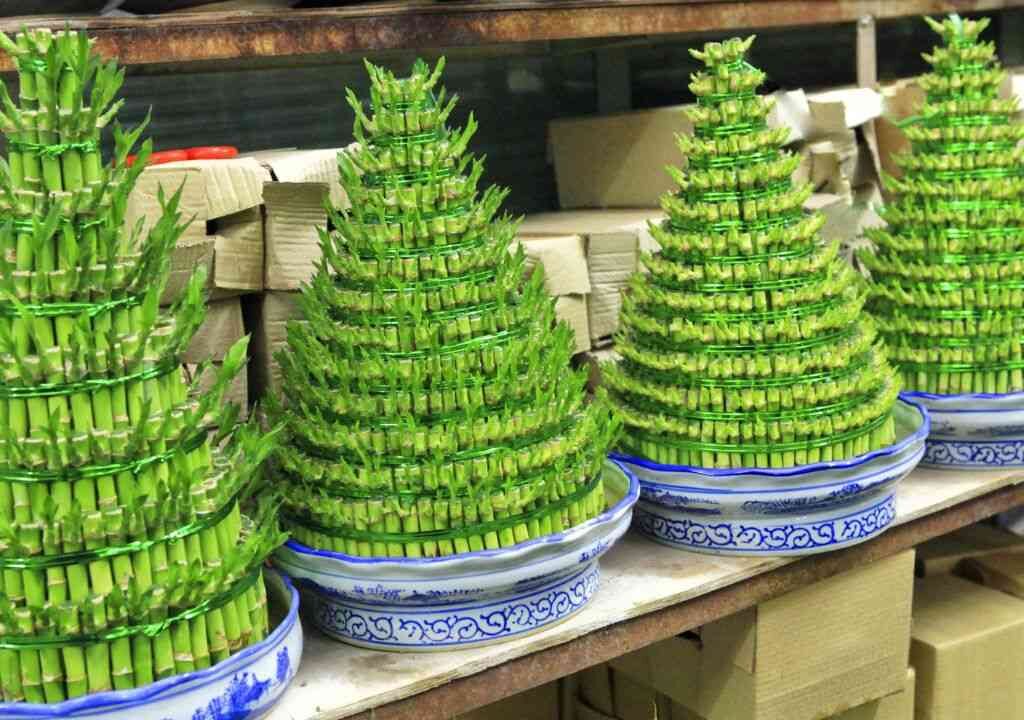
Proper watering is the key to maintaining a healthy bamboo plant:
- For water-grown bamboo: Ensure roots are always submerged, but don’t let the stalk sit too deep in water. Change water weekly.
- For soil-grown bamboo: Water when the top inch of soil feels dry. Keep the soil moist but never soggy.
- Use distilled or rainwater whenever possible, since chemicals in tap water can damage bamboo leaves.
Fertilizing Bamboo Plants
Even though bamboo is resilient, it benefits from occasional feeding:
- Lucky bamboo (in water): Use a liquid houseplant fertilizer, diluted to 1/10 strength, once every 2–3 months.
- Bamboo in soil: Fertilize once a month during spring and summer with a balanced fertilizer (10-10-10 NPK).
- Avoid over-fertilizing, as too many nutrients can turn the leaves yellow.
Temperature and Humidity
- Bamboo plants thrive in temperatures between 65–90°F (18–32°C).
- Keep them away from cold drafts, heating vents, and air conditioners.
- Indoor bamboo loves humidity. Mist the leaves occasionally, especially in dry indoor conditions.
Pruning and Maintenance
To maintain a neat and healthy bamboo plant:
- Trim yellow or dead leaves regularly to encourage fresh growth.
- Prune overgrown stalks by cutting above a node (the ring on the stem).
- Shape your bamboo – Lucky bamboo can be trained into spirals or braids by rotating the plant gradually toward a light source.
- Wipe the leaves with a damp cloth to remove dust and keep them shiny.
Repotting Indoor Bamboo
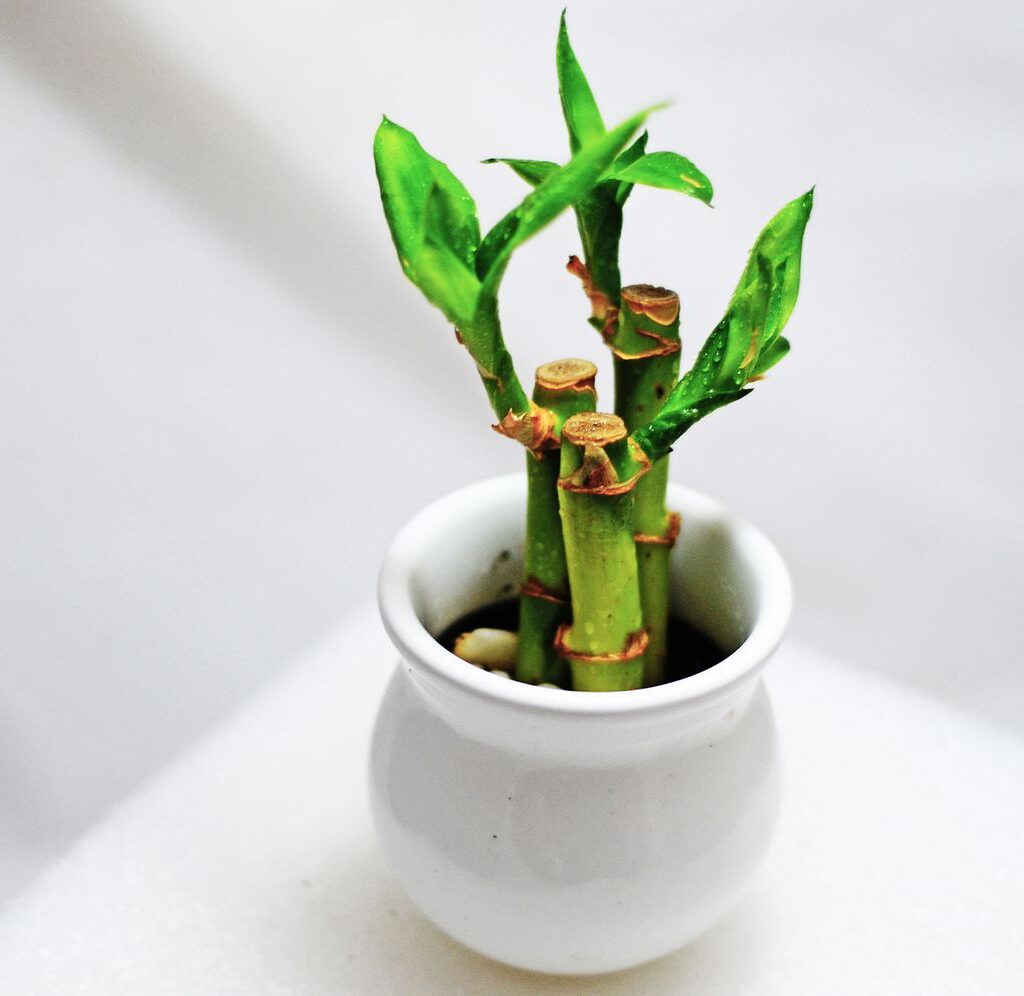
Over time, bamboo may outgrow its container. Repot every 2–3 years or when roots crowd the pot.
Steps:
- Choose a slightly larger container.
- Refresh with new potting soil (for soil-grown bamboo).
- For water-grown bamboo, clean the container thoroughly before refilling with fresh water and pebbles.
Common Problems and Solutions
Like all plants, indoor bamboo may encounter issues. Here are the most common problems and how to fix them:
- Yellow Leaves
- Cause: Overwatering, direct sunlight, or poor water quality.
- Solution: Use filtered water, move to indirect light, and check soil moisture.
- Drooping Stalks
- Cause: Lack of light or nutrients.
- Solution: Move to a brighter spot and fertilize lightly.
- Brown Leaf Tips
- Cause: Low humidity or fluoride in tap water.
- Solution: Increase humidity by misting and switch to distilled water.
- Root Rot
- Cause: Waterlogged soil or stagnant water.
- Solution: Ensure proper drainage and change water frequently.
Feng Shui and Symbolism of Lucky Bamboo
One of the most fascinating aspects of indoor bamboo is its symbolic meaning in Feng Shui:
- 2 stalks – Love and partnership.
- 3 stalks – Happiness, wealth, and long life.
- 5 stalks – Health and balance.
- 8 stalks – Prosperity and abundance.
- 9 stalks – Good fortune.
Placing bamboo in your home or office is believed to attract positive energy and good luck.
Design and Display Ideas
Indoor bamboo can be styled in creative ways:
- Glass vases with pebbles – Perfect for modern minimalist homes.
- Braided or spiral bamboo – Adds an artistic touch.
- Clustered arrangements – Combine multiple stalks for a fuller look.
- Bamboo in decorative pots – Match with your interior theme.
- Tabletop centerpieces – Use small bamboo plants as natural décor.
Seasonal Care Tips
- Spring/Summer: Active growth period; fertilize lightly and provide consistent water.
- Fall/Winter: Growth slows down; reduce watering and fertilizing. Protect from cold drafts.
Conclusion
Growing bamboo indoors is a rewarding and stress-free experience, even for complete beginners. Whether you choose lucky bamboo in water for a minimalist look or bamboo in soil for stronger growth, these plants will thrive with basic care—moderate light, clean water, occasional feeding, and proper pruning.
Beyond their lush greenery, bamboo plants also carry deep symbolic meaning, representing prosperity, harmony, and resilience. By following this complete beginner’s guide, you can enjoy a thriving indoor bamboo plant that enhances both your living space and well-being.
